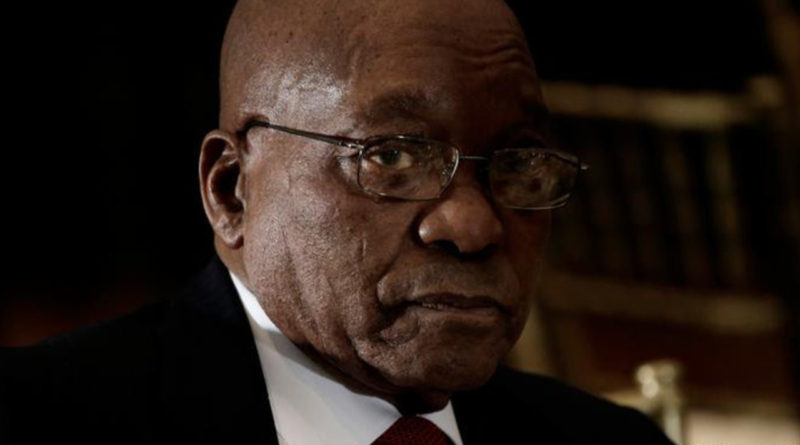Recall, impeachment, no-confidence motion or ‘Mbeki solution’: what is at stake?
With rumours swirling fast and loose regarding the president’s imminent departure from the office, it is important to note that he can leave the office through being “recalled”, being impeached, or having a motion of no confidence passed.
Each of the different processes will achieve different results. Here is a primer on what should follow, depending on how the president leaves the office.
“Recalled”
In terms of the governing party’s political parlance, being “recalled” refers to the governing party’s National Executive Committee (NEC) resolving that the president step down from the position.
Should the president acquiesce to the resolution, then this will be followed by his resignation. A resignation in terms of South Africa’s Constitution, counts as a “vacancy in the office of the President”.
As such, the deputy president occupies the office of the president, assuming all the responsibilities, powers and functions of the office. The Constitution further provides that a person who fills the vacancy in the office of the president merely completes the term of office of the recently deposed president, without this regarded as a term. This leaves any such interim president free to hold the office for two more terms, if so elected.
Impeachment
Impeachment, or removal of the president as per the Constitution, is a fault-based mechanism, dependent on a two-thirds majority support by the National Assembly. In accordance with a December decision of the Constitutional Court, the Rules Committee is yet to adopt final regulations regarding the impeachment of a president.
The Constitutional Court ruled that a president may only be impeached where the serious violation of the Constitution or the law, serious misconduct, or inability to perform the functions of office have been established prior to the adoption of the impeachment resolution.
As such, it is highly unlikely that the president can be successfully impeached before he delivers the State of the Nation Address (SONA) on 8 February, given that there is not yet a mechanism with which to impeach. Nonetheless, should the president face the ignominy of a successful impeachment, then as with a “recall”, the deputy president stands to thereafter occupy the office of the president.
Motion of No Confidence
The Economic Freedom Fighters have, in the meantime, tabled a motion of no confidence debate, which the speaker of the National Assembly has scheduled for 22 February, well after the president’s SONA.
The motion, in accordance with section 102(2) of the Constitution, if passed by a simple majority, will remove not just the president from office, but also, the deputy president, the entire Cabinet, as well as deputy ministers. Thereafter, the speaker of Parliament assumes the president’s office in an acting capacity until the members of the National Assembly elect one of their own to occupy the office of the president.
This process obviously differs from the consequences flowing from a president’s “recall” or impeachment in that the deputy president will not occupy the president’s office. The deputy president will then continue to occupy his position as an ordinary Member of Parliament.
It will be up to the other Members of Parliament to vote him into the highest office of the land. Given a reportedly divided governing party parliamentary caucus, it is unclear who South Africa’s next president will be, post the speaker handing back the reigns, should a motion of no confidence be passed successfully.
Suffice to say, any person elected president post the successful motion of confidence will complete President Zuma’s term of office and still be eligible for re-election in 2019 as per the dictates of section 88(2) of the Constitution.
“Mbeki Solution”
As South Africans will remember, the president being “recalled” finds precedence in the events of 2008, when the governing party’s NEC recalled Thabo Mbeki. He of course chose to resign on the back of the resolution, choosing not to face the humiliation of his former “comrades” passing an impeachment vote against him in the National Assembly.
The then deputy president, Phumzile Mlambo-Ngcuka, should have assumed the office of the president, but she too elected to resign from the office in sympathy with erstwhile President Thabo Mbeki.
The members of the National Assembly then elected Kgalema Motlanthe as president to complete the remaining nine months of office left in Mbeki’s term as president of the Republic. Thereafter, current president Jacob Zuma was elected into office. This suggests therefore, that there is room for a compromise candidate in the president’s office while South Africa readies itself, both figuratively and literally for the 2019 general elections.
Conclusion
The Speaker of the National Assembly has, yet again, incurred the displeasure of the opposition parties. This, after allowing the SONA to proceed as scheduled and also tabling the no confidence motion debate post the SONA. She is not entirely at fault in this instance, given that Jacob Zuma is still the de facto president of the Republic, regardless of the rumours.
While political analysts may speak of writings on the wall regarding the president’s stay in the office, however, unless he is “recalled”, impeached or has a successful motion of no confidence in him passed, then he remains in the office.
Ultimately, this uncertainty, coupled with a deputy president who is also president of the governing party, creates two seeming centres of power and breeds both policy and political uncertainty for the nation. It is time that the governing party took the nation into its confidence and assuaged public concerns over the occupancy of the highest office in the land.
– Phephelaphi Dube is director of the Centre for Constitutional Rights
News24

